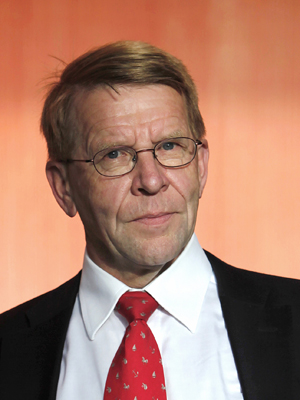
Nuclear Safety: Is the World Prepared Enough?
Not everyone thinks the Japanese are handling the emergency in the best manner possible
As Japan struggled to keep the failed nuclear reactors under control last week, Jukka Laaksonen, director of Finland’s Radiation and Nuclear Safety Authority and a member of the International Atomic Energy Agency’s (IAEA) Safety Standard’s Commission and Committees, wondered at the inefficient emergency management response from the Japanese. A day later, talking to Forbes India from China, where he was on a site visit, he first lamented the limited information coming out of Japan; then argued: “Maybe the exceptional ground situation has impacted the decision-making power [of the Japanese officials].” Looking for a silver lining in the radioactive plumes coming out of the reactors in Fukushima, he spoke about the issues that all nuclear power nations are today debating. Edited excerpts:
The impact on global nuclear energy pursuit even as Germany has shut down a third of its reactors that are pre-1980 make
The immediate fallout is that it will be very helpful in enhancing safety in nuclear plants worldwide. Countries, including India, are already undertaking safety reviews of the reactors so we’ll certainly be better off. What the political consequences would be, I am not in a position to predict.
In Germany, technically speaking, there was no reason to shut down the reactors. But nuclear power has been a politically difficult issue in this country. I’ve been informed that the European Union meeting that took place in Brussels on March 15 took a decision to assess all the facilities and seek global cooperation on new safety measures. This is not the first tsunami that nuclear reactors have had to brace. Thailand and India have seen this in the past. In China I’ve visited the site of a reactor construction at Hainan. I am pleased to see the 10 metre high concrete protection. It’s the first time I’ve seen such a protection and it demonstrates that this is not too complicated; in fact it’s pretty straightforward and doesn’t cost much. [India’s Koodankulam nucleat reactor has a 7.5 metre high concrete protection against tsunami or flooding.]
Such measures can be taken even at existing plants.
Areva’s delayed European Pressurized Reactor at Okilouto in Finland, which opponents of Jaitapur plant are citing as an example of cost overrun
The Okilouto project is no way an example of what can happen. It’s the first plant of its kind and the cost overruns are due to many basic infrastructure investments that Areva has had to make. Wherever Areva is building more such reactor, cost has not escalated like this. India should look at China which is building two units in the south in Hainan. Both units are progressing well and they can serve as a good model for India.
[Areva claims EPRs are designed to withstand high-impact missile or plane crashes; to prevent hydrogen accumulation (which led to explosion in reactor buildings in Fukushima); and a ‘core catcher’ in the containment to safeguard a meltdown.]
why India has never asked for the Integrated Regulatory Review Service (IRRS) of the IAEA; most countries in the world have voluntarily undergone it
Almost all nuclear power generating countries have invited IAEA for IRRS. South Korea will get it this summer. No, it’s not an international stamp but a peer review that compares a country’s nuclear and radiation regulatory infrastructure against international standards and gives insight into good practices elsewhere which a country is free to adopt. I’d highly recommend India to go for this mission.
How, globally, 70% of the spent fuel are kept in interim storages (as it was in Fukushima and as it is proposed in Jaitapur); no spent fuel or high level waste separated from it has been disposed to a safe final repository
In many places interim storages are near the reactor, some countries store it in standalone, passive containers. Today enough scientific and technical knowledge exists for safe disposal of high level waste but only a few countries have taken steps to ably dispose it; many have adopted a wait-and-watch policy. Long term storage is more risky than disposal. The Japanese crisis reiterates that this issue needs to be addressed with immediacy.
-
 Gautham Narayan
Gautham NarayanWhy will India allow any peer review, the nuclear establishement in the country believes in neither asking nor telling the public about these issues. By not talking openly about the concerns that the public has, they are only alienating a section of the population that could one day be their biggest supporter. Science and technology is an integral part of society, perhaps more than ever in the history of humankind. Decisionmakers in these areas should come out of their ivory tower.
on Mar 21, 2011















